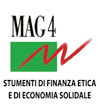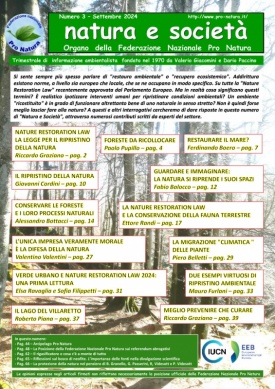The History
Italian environmentalism began in June of 1948.
The “Movimento Italiano Protezione della Natura” (known today as the “Federazione Pro Natura”) was first established in Valle D’Aosta, while in October of that same year, at the International Congress in Fontainebleau, the IUCN was established, to which Pro Natura became a founding member. At that same moment in history, the Italian Republican Constitution made vague references to nature as an imprecise, lovely painting, as stated in article 9 of the Constitution, based on the previous law, number 1497, established in 1939. Any existing environmental group on the planet at that time was more concerned with scientific study and cultural implications, rather than any sort of political movement dedicated to the protection of ecosystems. This was true for the following associations, established in the 1800’s: the “Piedmont Zoophiles Society”, the “Italian Botanic Society”, the “Italian Zoologists’ Union”, the “Italian Alpine Club”, “The Cyclists’ Touring Club”, the “Val D’Aosta Flower Society”, the “Pro Montibus et Silvis”, the “Ragazzoni Naturalist Group”, the “Association for the Protection of Picturesque landscapes and Monuments”; as well as those established directly after WWII: the “Italian Naturalists’ Union”, and “The Naturalist Society of Verona”.
«The idea to gather together, in Italy, a diverse group of such rare, courageous and passionately forceful men in the field of environmental protection…”, ”it came to me after having seen so much successful work in this field being carried out abroad, and then realizing how precious little had been done in Italy…”.”The fact is, I’ve been searching desperately for the last three years to find ways to save the Gran Paradiso National Park…”. ”Experience has taught me that naturalist societies that are ‘too brainy’ or ‘too scientific’ are unable to even partially reach these goals. I’m convinced that the only possible way to protect nature is through a beating heart. Immersed in a visible reality of rare and solitary beauty, of mountains, trees and fauna, that’s where you will find your work force; not in some sublime, abstract limbo of scientific thought, rather through a creatively poetic interpretation of the nobility of life within its mysterious natural world, a world being suffocated by false human arrogance…”. ”Here, in an Italy that has produced so many worthy people currently operating in the environmental field, we should not allow ourselves to be discouraged. We should at least attempt; gather together for discussion, and yes, even disagree among friends if necessary, without agenda, nor waste of money and energy on superficiality or appearances…”, ”this, our preliminary discussion is urgent and will be necessary for the planned future International UNESCO conference to be held in Paris.»
These ideas evolved for at least a year in the minds of a small group of visionaries from Trento, Milano and Torino who met and developed them together. Heading this group was Renzo Videsott, expert mountain climber from the Dolomites, later director of the University of Torino’s Veterinary department and supervising director of Gran Paradiso National Park. After the war, his dedicated involvement contributed to the preservation of the last remaining examples of Alpine Ibex.
Videsott’s main partners during this year-long dialogue were Domenico Rudatis, his mountaineering companion on so many Dolomite expeditions, and Count Gian Giacomo Gallarati Scotti, scholar, protector of the last remaining Alpine brown bears and promoter of the Adamello-Brenta-Stelvio Park. And so it was, at Count Scotti’s villa in Oreno di Vimercate, that the cornerstone for the first environmental association in Italy was laid. Pro Natura has most certainly played a crucial role in raising collective awareness on all matters relating to problems of the environment. That meeting came about as a result of a letter written by Videsott, from which the above quotes were taken. Among the participants, there to record the event, was Dino Buzzati, journalist for the “Corriere della Sera” and friend of the host.
«We find it refreshingly civilized that in the year 1948, there are actually people who sincerely care about these issues. If one is able to confront nature with an honest soul, miseries seem to melt away, men can meet as equals forgetting about what color they may be….”. ”Who cares, some may say, if the bears disappear from the Alps. That would be like asking if it mattered if Leonardo’s ‘Last Supper’ were reduced to ashes. The world would suffer an irreparable loss of magic, just another defeat for our already fragile earth.”»
The next day, the group went from there to Torino and finally, at Sarre, Valle D’Aosta, near the entrance to Gran Paradiso. It was there, in the 25th of June that Renzo Videsott, his brother Paolo, the brothers Nino and Bruno Betta, Fausto Stefanelli, Benedetto Bonapace, Raffaello Prati, Fausto Penati, Alberto Deffeyes, Mario Stevenin, Giulio Brocherel and Alberto Durandi established, in the halls of the castle that houses the hunting trophies of the Savoia family, the first environmental association in the history of Italy, the “Movimento Italiano per la Protezione della Natura” (the Italian Movement for the Protection of Nature), later known as “Pro Natura Italica” and today actively known as “Federazione Nazionale Pro Natura”, with over 120 chapters throughout the Italian peninsula.
However, Videsott’s program of activities did not stop there. He decided to conclude their meeting with a hike up to his beloved meadows in the park «cast amid the warnings and pleadings from the living mountains». In order to reinforce, with nature as their backdrop, «this meeting of the minds of men of good will, who generously offer to work, and fight if need be, but above all collaborate, with the vital aim of protecting nature.» In the days following the meeting more people became involved. The MIPN was officially introduced during a press conference at Palazzo Cisterna, the provincial seat of Turin and the headquarters of Gran Paradise National Park.
A temporary steering committee was formed to draft the first statute, which to this day, remains as timely as ever: «We, the members of the MIPN have faith in our mission, and if it receives the backing and support it deserves, even Italy will develop an environmental consciousness, based on a practical, active approach, accessible to all citizens. This mission, contrary to its seemingly emotionally superficial and narrow scope, intends to act upon a much larger scale, by reactivating the fragile equilibrium between man and nature. This balance has been disrupted through a particularly dangerous series of violations, which continue uninterrupted today. Irrational exploitation of the soil through depletion of its mineral components, deforestation, endangering of species useful to man, as well as the alteration of hydraulic cycles, etc. are weighing heavily upon us and will catastrophically effect future generations. One need only consider the fact of soil erosion: whether caused or exacerbated by the ignorance of man’s actions, the planet is losing 20,000 hectares of cultivated earth every 24 hours. On the other hand, global population is increasing by 35,000 souls every day! We can no longer sit back and wait for technical or governmental intervention in order to confront the danger looming ahead for future generations. It is up to us as individuals to change public opinion by creating a new environmental conscience. Therefore, we must strive to educate in order to create a new, respectful equilibrium with regard to human living conditions, endeavoring to clear up misunderstandings towards economic needs, always with an eye towards future generations, thus avoiding the irreversible consequences of an egoism that lives only for the moment. In consequence, direct contact with nature leads to a deeper love and understanding of the natural world, higher spiritual awareness and a heightened appreciation for moral, educational and esthetic values. At the end we will find an harmonious interplay between the natural, philosophical and social sciences; artistic movements, schools, tourism, hunting and mountaineering.»
Thus, Italian environmentalism was born, marking the passage from scientific study geared towards single components and landscape, to a commitment towards safeguarding and conservation for future generations. The environmental vision is no longer detached and naturalistic, rather it must now include a political consciousness that values planetary resources, while combating waste, rapid consumption and opposing compromising legislation favoring activities which contribute to pollution. These same ideals were incorporated, a few months later at Fontainebleau in the foundation of the “International Union for the Protection of Nature” which changed its name in 1956 to “The International Union for the Conservation of Nature”. At that same meeting Renzo Videsott was present as a representative of Gran Paradiso National Park as well as the National Association of landscapes and Picturesque Monuments, while his brother Paolo along with Mrs. Antonia Pruner represented the MIPN. The representative for the Italian Government was Michele De Tomasso. The constitutional document of this most important organization for environmental protection bears the signatures of the representatives of 18 governments, seven international organizations and 107 national environmental protection associations. On October 5, 1948 the MIPN was officially recognized as a founding member of the UIPN. Renzo Videsott was made a member of the executive committee. Therefore, 1948 was a year of extraordinary importance in the history of the environmental movement, which gradually gained momentum towards an international consciousness of man’s responsibility to our planet.
It was officially incorporated in October 1959 under the name “Pro Natura Italica”, as the direct descendent of the “Movimento Italiano Protezione della Natura” (MIPN), which was established in June of 1948 at Sarre, in Valle d’Aosta, by a group of naturalists who were directly involved in environmental conservation.The leaders of this group were Paolo and Renzo Videsott.At that time, Renzo was the director of the Gran Paradiso National Park.
The MIPN was very active from the time of its inception and throughout the 1950’s, with various chapters in north and central Italy (Turin, Milan, Vicenza, Trento, Genoa).What set the MIPN apart from other similar groups of that time was its dedication to raising awareness of the social and political implications involved in the defense of nature with respect to its various components: geology, landscape, flora and fauna.
The association managed, without undue emotion, to link environmental understanding and scientific integrity in confronting ecological problems.
Pro Natura Italica was officially incorporated in October 1959 through the initial efforts of “Pro Natura Torino”, the “Emiliana Pro Montibus et Silvis” (pro mountain and forest society), the “Union of Bolognese Naturalists”, the “Genovese Provincial Committee for the Protection of Nature”, the “Naturalist Society of Verona” and the “Carso Committee for the Protection of Flora and Fauna”.
Their original leader was Cesare Chiodini, who at that time was also the president of “Touring Club Italiano”. He was succeeded in later years by: Valerio Giacomini, Alberto Silvestri, Francesco Corbetta, Corrado Maria Daclon and Walter Giuliano, the current president.
In the early 1970’s, the periodical “Natura Società” was first published by Valerio Giacomini, noted Botanist and Ecologist from the University of Rome; and Dario Paccino, journalist and writer (“L’imbroglio Ecologico” edited by Einaudi).After a brief suspension in the early 1980’s, it became the official tri-monthly newsletter for the Federation Pro Natura, under the new title: “Natura e Società”.
Scientific method and sociopolitical awareness have been the leading principles of the National Federation Pro Natura for over 60 years.
The governing rules, along with its statutes were laid down in 1973 in the “Forli Papers”, which established the association’s guidelines and later updated in 1981.











